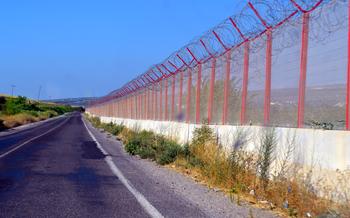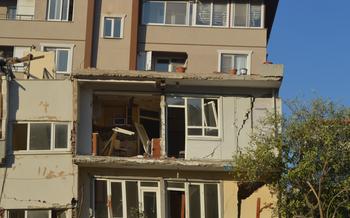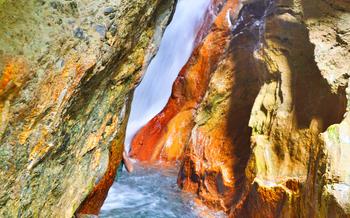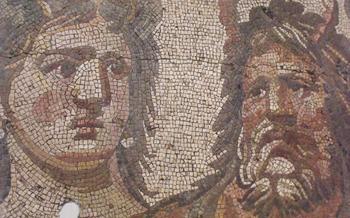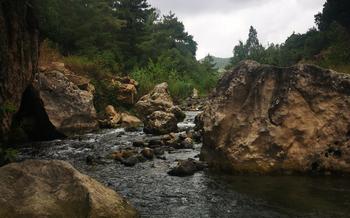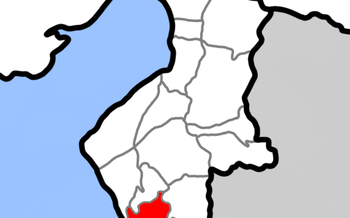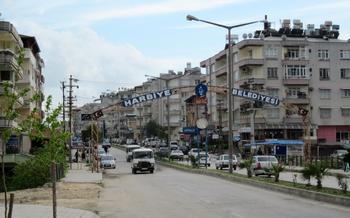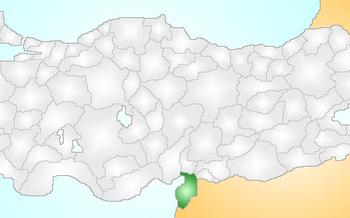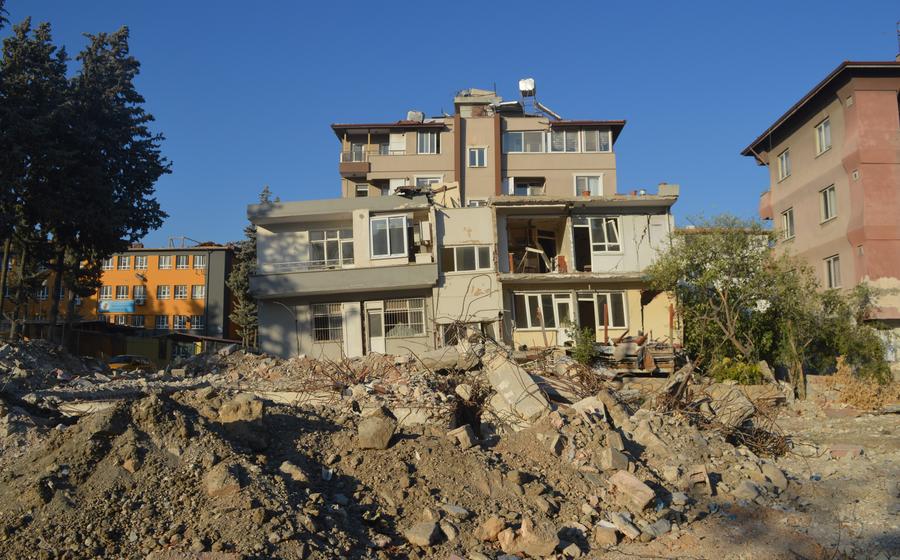
Defne Harbiye Mosaics Museum
- History of the Defne Harbiye Mosaics Museum
- Location of the Museum
- Significance of the Mosaics
- Highlights of the Museum Collection
- Interactive Displays and Exhibits
- Guided Tours and Educational Programs
- Accessibility and Facilities
- Admission Fees and Hours of Operation:
- Surrounding Attractions
- Local Cuisine and Restaurants
- Accommodation Options
- Festivals and Events
- Safety and Security
- Photography and Social Media
History of the Defne Harbiye Mosaics Museum
In the heart of the ancient land of Hatay, where history and culture intertwine, lies the Defne Harbiye Mosaics Museum. This remarkable museum houses a collection of stunning mosaics that offer a glimpse into the artistic heritage of the Roman period. The journey to uncover these treasures began with archaeological excavations at the site of Harbiye, a village near the town of Defne. During these excavations, conducted in the late 19th and early 20th centuries, archaeologists stumbled upon the remnants of a grand Roman villa adorned with intricate mosaic floors.
The discovery of these mosaics sparked excitement and intrigue among scholars and art enthusiasts alike. Recognizing the significance of the find, efforts were made to restore and preserve these ancient artworks. Skilled artisans painstakingly cleaned and repaired the mosaics, ensuring their longevity for future generations. The establishment of the Defne Harbiye Mosaics Museum in 1975 marked a pivotal moment in the preservation and display of these remarkable treasures. Today, the museum stands as a testament to the artistry and craftsmanship of the Roman era, inviting visitors to immerse themselves in the beauty and history of these ancient mosaics.
Location of the Museum
The Defne Harbiye Mosaics Museum is strategically situated in the heart of Defne, a picturesque town steeped in historical charm. This strategic placement offers convenient access to visitors from all corners of the region. Moreover, its proximity to the bustling city of Antakya, a renowned tourist hub, further enhances its allure.
Reaching the museum is a breeze, whether you prefer the convenience of public transportation or the freedom of your own vehicle. Numerous buses and minibuses regularly ply the route between Antakya and Defne, making it an effortless journey. For those who prefer the flexibility of self-driving, the museum is easily accessible via well-maintained roads. Ample parking spaces are available in the vicinity, ensuring a hassle-free visit.
Significance of the Mosaics
The mosaics at the Defne Harbiye Mosaics Museum hold immense artistic and historical value. They are exquisite examples of Roman mosaic art, dating back to the 3rd and 4th centuries AD. These intricate mosaics depict a diverse range of subjects, including mythological scenes, daily life, and nature. Each mosaic tells a story, offering a glimpse into the culture and beliefs of the ancient Roman inhabitants of the region.
The "Gypsy Girl" mosaic, a captivating portrayal of a young woman with piercing eyes and intricate headdress, is a standout piece. The "Hunting Scene" mosaic, with its vibrant depiction of a lion hunt, showcases the artistic prowess of the mosaicists. The "Four Seasons" mosaic, with its symbolic representation of the changing seasons, is a testament to the agricultural roots of the region.
Beyond their aesthetic beauty, these mosaics carry deep cultural significance. They provide insights into the mythology, folklore, and religious practices of the Roman era. The mosaics also shed light on the daily lives of the people, their customs, and their interactions with the natural world. By studying these mosaics, we can piece together the rich tapestry of life in ancient Hatay.
Highlights of the Museum Collection
The Defne Harbiye Mosaics Museum houses a remarkable collection of mosaics that showcases the artistic and historical significance of the region. Among the highlights of the collection are:
-
The "Gypsy Girl" mosaic: This captivating mosaic depicts a young woman with dark, almond-shaped eyes, a mischievous smile, and intricate jewelry. Her vibrant attire and confident posture have earned her the nickname "Gypsy Girl," and she has become one of the most iconic images associated with the museum.
-
The "Hunting Scene" mosaic: This stunning mosaic portrays a thrilling lion hunt, with a courageous hunter on horseback spearing a majestic lion. The intricate details of the animals, the dynamic composition, and the vibrant colors make this mosaic a true masterpiece.
-
The "Four Seasons" mosaic: This symbolic mosaic represents the changing seasons through four distinct panels. Each panel depicts a different season, with personifications of the wind gods and seasonal activities. The "Four Seasons" mosaic offers a glimpse into the ancient Roman perception of time and nature.
Interactive Displays and Exhibits
To enhance the visitor experience, the Defne Harbiye Mosaics Museum boasts a range of interactive displays and exhibits. These innovative features bring the ancient mosaics to life and make the museum an engaging and educational destination for visitors of all ages.
Interactive multimedia presentations provide detailed insights into the history, techniques, and symbolism of the mosaics. Touchscreen kiosks offer visitors the opportunity to zoom in on specific details, explore interactive maps, and access a wealth of information about the site and its significance.
For younger visitors, the museum offers a variety of interactive games and activities that make learning about Roman mosaics both fun and educational. These activities include hands-on mosaic puzzles, interactive quizzes, and virtual tours that allow children to explore the museum's collection in a playful and engaging way.
Through these interactive displays and exhibits, the Defne Harbiye Mosaics Museum offers a truly immersive and memorable experience for visitors, allowing them to connect with the past and gain a deeper appreciation for the artistic and cultural heritage of ancient Rome.
Guided Tours and Educational Programs
The Defne Harbiye Mosaics Museum offers guided tours to enhance your visit. Conducted by knowledgeable and enthusiastic guides, these tours provide in-depth insights into the history, significance, and iconography of the mosaics. Tours are available in various languages, ensuring that visitors from all corners of the world can appreciate the museum's treasures.
The museum also caters to educational groups, offering school programs and workshops tailored to different age groups. These programs bring history to life for students, allowing them to engage with the mosaics through interactive activities, hands-on experiences, and storytelling.
Moreover, the museum organizes lectures, seminars, and workshops on Roman mosaics and related topics. These events are open to the public and provide an opportunity for visitors to learn from experts in the field. By attending these programs, you can gain a deeper understanding of the artistic techniques, cultural context, and historical significance of the mosaics.
Accessibility and Facilities
The Defne Harbiye Mosaics Museum is committed to making art accessible to everyone. Wheelchair accessibility is ensured throughout the museum, with ramps and elevators providing easy access to all levels. Restrooms are equipped with accessible stalls, and baby-changing facilities are available for families with young children.
To enhance the visitor experience, the museum offers a range of facilities and services. A gift shop at the entrance sells souvenirs, books, and educational materials related to the mosaics and Roman history. Visitors can browse a selection of locally crafted items, including ceramics, textiles, and jewelry, as well as postcards and reproductions of the mosaics.
The museum also provides educational resources for visitors of all ages. A dedicated education center offers interactive exhibits, hands-on activities, and workshops for children and adults. School groups can book guided tours and educational programs tailored to their curriculum. Throughout the year, the museum hosts lectures, seminars, and workshops on Roman mosaics, their conservation, and their cultural significance.
Admission Fees and Hours of Operation:
Admission to the Defne Harbiye Mosaics Museum is subject to a modest entrance fee, which varies depending on the visitor category. Adult visitors are charged a standard rate, while children and students are eligible for discounted tickets. Group rates are also available for organized tours and educational groups. It is advisable to check the museum's website or contact them directly for the most up-to-date information on admission fees.
The museum follows specific operating hours to ensure the preservation of the mosaics and the comfort of visitors. It remains open throughout the week, with varying hours on weekdays and weekends. During the summer months, the museum extends its hours to accommodate the increased tourist traffic. Visitors are encouraged to plan their visit accordingly to avoid any inconvenience. Advance booking options are available for groups and individuals who wish to secure their entry, especially during peak tourist seasons.
Surrounding Attractions
The Defne Harbiye Mosaics Museum is located in the heart of Hatay, a region renowned for its rich history and cultural heritage. Beyond the museum, visitors can explore a wealth of surrounding attractions that further immerse them in the region's past and present.
A short drive from the museum is the ancient city of Antakya, once the capital of the Roman province of Syria. Here, visitors can wander through the ruins of Roman temples, theaters, and colonnaded streets, and admire the awe-inspiring Antakya Castle, which offers panoramic views of the city and the surrounding countryside.
For those seeking natural beauty, Mount Starius, the highest peak in the Hatay region, beckons with its lush forests, cascading waterfalls, and breathtaking vistas. Hiking trails lead to hidden valleys, ancient monasteries, and panoramic viewpoints, making it a paradise for outdoor enthusiasts.
The Mediterranean coast, just a short drive from the museum, offers a welcome respite from the summer heat. Pristine beaches, crystal-clear waters, and charming seaside towns invite visitors to relax, swim, and savor the flavors of fresh seafood at local restaurants.
Whether exploring the ancient ruins of Antakya, trekking through the scenic landscapes of Mount Starius, or basking in the sun on the Mediterranean coast, visitors to the Defne Harbiye Mosaics Museum will find a wealth of surrounding attractions that enhance their understanding and appreciation of this historically rich region.
Local Cuisine and Restaurants
A visit to the Defne Harbiye Mosaics Museum is not complete without exploring the local cuisine of Hatay. The region is renowned for its rich culinary traditions, influenced by its diverse cultural heritage. Here are some recommendations for local restaurants and dishes to try:
-
Künefe: A must-try dessert in Hatay, künefe is a delicious pastry made with shredded filo dough, filled with cheese, and topped with sugar syrup. It's a popular treat that can be found in many local sweet shops.
-
Hummus: Hatay is famous for its hummus, a creamy and flavorful dip made from chickpeas, tahini, lemon juice, and garlic. It's a staple in many local restaurants and is often served as an appetizer or side dish.
-
Kebabs: Turkey is well-known for its kebabs, and Hatay offers a variety of grilled meat dishes. From döner kebabs to şiş kebabs, there are many options to choose from.
-
Testi Kebabı: This unique kebab is prepared in a sealed clay pot called a "testi." The meat is cooked slowly in its own juices along with vegetables and spices, resulting in a tender and flavorful dish.
-
Antakya Kültür Konağı: Located in the heart of Antakya, this restaurant serves a variety of traditional Hatay dishes in a charming and authentic setting.
-
Zeynel Usta'nın Yeri: Known for its delicious kebabs and meze platters, this restaurant is a favorite among locals and tourists alike.
-
Kebapçı Halil Usta: For some of the best künefe in Hatay, head to Kebapçı Halil Usta, a local favorite with a reputation for its exceptional desserts.
Accommodation Options
When planning your visit to the Defne Harbiye Mosaics Museum, there are several accommodation options available in the surrounding area. For a comfortable and convenient stay, consider booking a room at one of the hotels or guesthouses located near the museum. These establishments offer a range of amenities to suit different budgets and preferences, including cozy guest rooms, delicious breakfast options, and friendly hospitality.
To ensure a hassle-free experience, it's recommended to book your accommodation in advance, especially during peak tourist seasons. Online booking platforms and travel agents can provide you with a wide selection of hotels and guesthouses to choose from, allowing you to compare prices, amenities, and guest reviews.
For those seeking a more immersive and authentic experience, consider staying at a local guesthouse or bed and breakfast. These establishments often offer a glimpse into the local culture and lifestyle, providing an opportunity to interact with friendly hosts and fellow travelers.
Whether you prefer the convenience of a modern hotel or the charm of a traditional guesthouse, there are plenty of accommodation options available to make your visit to the Defne Harbiye Mosaics Museum a memorable one.
Festivals and Events
The Defne Harbiye Mosaics Museum is not just a place to admire ancient mosaics; it also serves as a venue for cultural events and festivals that celebrate the rich heritage of Hatay. One of the highlights is the annual "Mosaics Festival," held in the summer months. This vibrant festival showcases local artisans, musicians, and performers, creating a lively atmosphere around the museum. Visitors can enjoy traditional Turkish music, dance performances, and art exhibitions while immersing themselves in the history and culture of the region. It's a wonderful opportunity to experience the living traditions of Hatay and connect with the local community. Keep an eye on the museum's website or social media pages for announcements about upcoming events and festivals.
Safety and Security
When exploring any new destination, it's essential to prioritize your safety and well-being. Here are some safety tips to ensure a smooth and enjoyable visit to the Defne Harbiye Mosaics Museum:
-
Be aware of your surroundings: As with any tourist destination, it's vital to be vigilant and aware of your surroundings. Keep an eye on your belongings and avoid walking alone in isolated areas, especially at night.
-
Respect local customs and traditions: Turkey is a predominantly Muslim country, and it's essential to respect local customs and traditions. Dress modestly, especially when visiting religious sites, and avoid public displays of affection.
-
Learn a few basic Turkish phrases: Learning a few basic Turkish phrases, such as "hello," "thank you," and "goodbye," can go a long way in showing respect and building rapport with locals.
-
Carry a copy of your passport: It's advisable to carry a copy of your passport or ID card when exploring the museum and the surrounding area. This can be helpful in case you need to prove your identity to local authorities.
-
Store valuables securely: Avoid carrying excessive amounts of cash or valuables. Keep your belongings close at hand and store valuables securely in a hotel safe or a hidden money belt.
-
Emergency contact information: Keep a list of emergency contact information, including the Turkish emergency number (112), handy. In case of an emergency, dial 112 from any phone to reach the police, ambulance, or fire department.
Photography and Social Media
The Defne Harbiye Mosaics Museum allows photography and videography for personal use, as long as visitors don't use flash or tripods. Capture the beauty of these ancient masterpieces and share your experiences with the world on social media! Tag the museum and use relevant hashtags to connect with other art and history enthusiasts. Share your awe-inspiring pictures and videos to help raise awareness of this unique cultural treasure. Your contributions on social media can play a crucial role in promoting and preserving the legacy of the Defne Harbiye Mosaics Museum.
